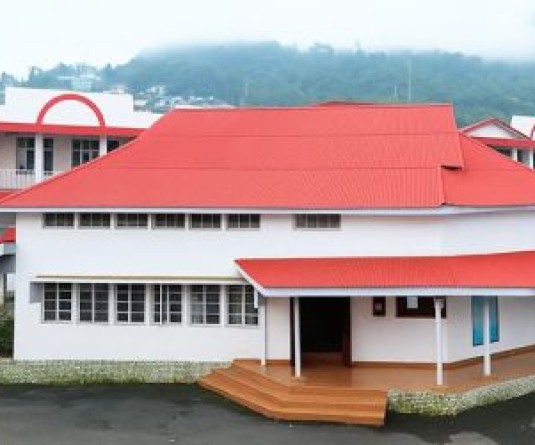
Moa Jamir
Dimapur | February 13
In a first for Nagaland in recent years, the State’s secondary school dropout rate fell below the national average in 2023-24, as reflected in an analysis of the Unified District Information System for Education Plus (UDISE+) reports.
According to the latest UDISE+ 2023-24 data, Nagaland recorded a secondary dropout rate of 11.6%, marking a steady decline from as high as 24.1% in 2018-19. Notably, the rate stood at 19.4% in 2022-23 but decreased to 11.6% in 2023-24, indicating an over 40% reduction in student dropouts at the secondary level. This brought the state’s figures below the national average for the first time in recent years.
During the same period, the all-India average increased from 13.8% to 14.1%. Nationally, the secondary dropout rate had shown a consistent decline, falling from 17.9% in 2019-20 to 12.6% in 2021-22, before increasing consecutively over the last two fiscals.
Overall rates
At the primary level, Nagaland recorded a dropout rate of 4.5% in 2023-24, lower than 9.3% in 2022-23 but higher than the national average of 1.9%. Similarly, the upper primary dropout rate stood at 5.8%, slightly above the national average of 5.3%.
The figures indicate an improvement in primary dropout rates compared to previous years, although they remain higher than national levels. The upper primary dropout rate has fluctuated over the years, staying close to national figures.
It must be noted that slightly different parameters were used to indicate dropout rates in 2023-24. Instead of "Primary," the term "Preparatory" (Classes III-V) was used, while "Upper Primary" and "Secondary" were designated as "Middle" (Classes VI-VIII) and "Secondary" (Classes IX-XII), respectively. However, the classification reverted to the earlier designations in 2023-24.
Overall, while Nagaland’s secondary dropout rate was lower than the national average, the primary and upper primary levels recorded higher dropout rates, ultimately affecting other educational outcomes measured in UDISE+.
Across all levels of education in Nagaland, dropout rates were higher among boys, resulting in lower promotion, transition, and retention rates for them.
In UDISE+, the dropout rate is defined as the proportion of pupils from a cohort enrolled at a given level in a given school year who are no longer enrolled at any grade in the following school year.
Concerning retention and repetition rates
Although dropout rates across all levels of education in Nagaland have shown a decline in 2023-24, the low retention rate and high repetition rate remain concerning.
Retention rate measures long-term participation in education system and denote the percentage of students enrolled in the first grade in a given year who are expected to complete the highest grade of that education level.
For example, it estimates how many students starting in Class 1 in a given year would go on to finish Class 12.
In 2023-24, Nagaland's retention rate for higher secondary (Classes 1-12) was 28.1%, the third lowest among all states and union territories in India, after Mizoram (24.2%) and Meghalaya (19%).
The national average was nearly double at 45.6%. This means that out of every 100 students who enter primary school in Nagaland, only 28 are expected to complete Class 12, compared to nearly 46 students nationwide.
However, this marks an improvement from 23.1% in 2021-22, when the overall retention rate was reported.
Retention rates in Nagaland show a decreasing trend as the education level increases, dropping from 65.6% at the primary level (Class 1-5) to 59.9% at the upper primary level (Grades 1-8), and further to 39.6% at the secondary level (Grades 1-10).
In comparison, the all-India rates were 95.4%, 81.2%, and 64.7%, respectively.
The report also highlighted a high repetition rate in Nagaland, indicating the proportion of students repeating a grade.
In 2023-24, the repetition rate at the secondary level (Class 9-10) stood at 15.1%, significantly higher than the national figure of 3.9%.
Nagaland’s rate was the second highest after Meghalaya (15.5%). Both the primary and upper primary levels also showed high repetition rates, exceeding 10%, compared to the national averages of 2.1% and 1.7%, respectively. Nagaland's promotion rate was lower than the national average.
However, the State performed better in transition rates, with higher percentages of students moving from primary to upper primary (Class 5 to 6) and from secondary to higher secondary (Class 10 to 11) compared to the national level.
On the other hand, the transition rate from upper primary to secondary (Class 8 to 9) was lower than the all-India level.
This is the third report in a series titled, ‘Nagaland’s UDISE+ Report Card.’






